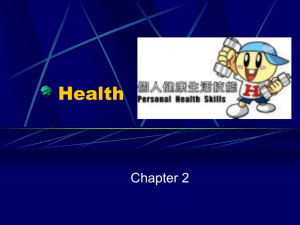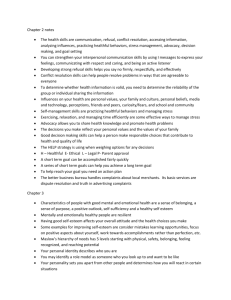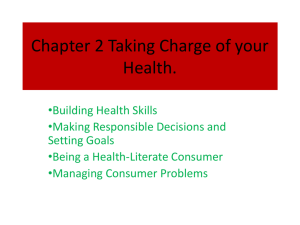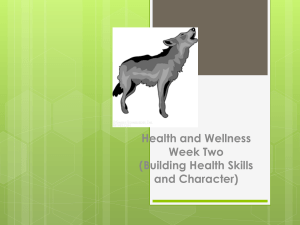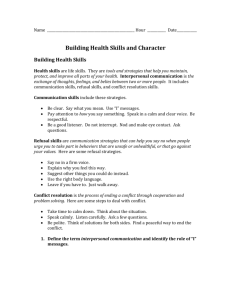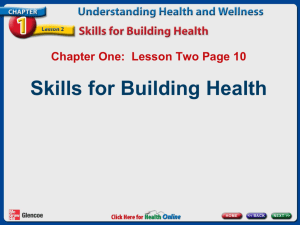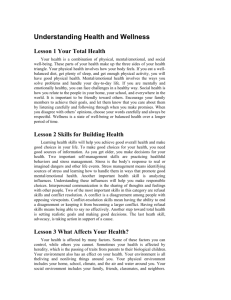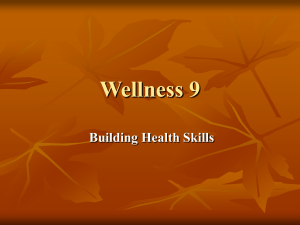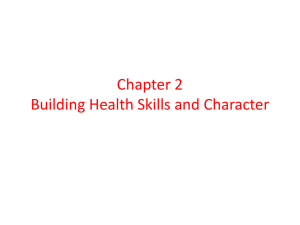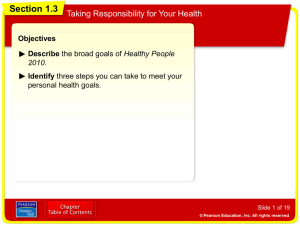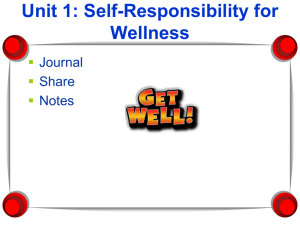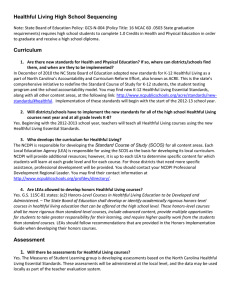Lesson 2 – Skills for Building Health
advertisement
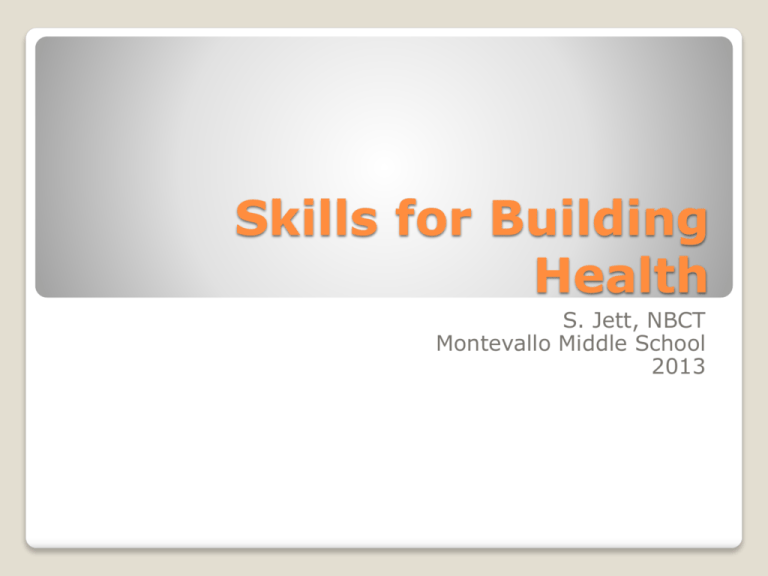
Skills for Building Health S. Jett, NBCT Montevallo Middle School 2013 Just as you learn sports, math, reading and other skills, you can learn skills for taking care of your health. Just like other skills, you must practice these health skills to improve your overall wellness. Health Skills 1. 2. 3. 4. 5. Accessing Information Practicing Healthful Behaviors Stress Management Analyzing Influences Communication Skills Conflict-Resolution Skills 7. Refusal Skills 8. Decision Making 9. Goal Setting 10. Advocacy 6. Ten Building Blocks for Total Health A world of information on any topic ready at your fingertips. Where are some places you can find information? How do you know if the information is reliable? 1. Parents 2. Trusted adults 3. Library resources 4. TV/Radio 5. Newsprint 6. Internet sites 1. Accessing Information .gov and .edu are usually the most reliable internet sources. Research the author to find out if he/she is an expert in the field. Check out the owner/operator of the website – Are they receiving any compensation? Is the information from a hospital, government agency and/or university? Valid and Reliable Sources When you were younger, your parents made most or all of your decisions for you, now as you get older, you are taking on more responsibility for your decisions. If you choose to exercise, your heart and other muscles grow stronger. What are other healthful behaviors? When you practice healthful behaviors, you learn new skills, meet challenges, and enjoy life, while preventing many problems. 2. Practicing Healthful Behaviors What is stress? You will always have positive and negative stress in your life. Give examples of both. Learning strategies to deal with stress is vital to a healthy life. 3. Stress Management Let’s list some positive and negative ways people deal with stress. Activity 1 – Stress T Chart Your decisions have to do with more than knowing the facts. The have to do with your values and beliefs. The opinions of your friends and family, your culture, and messages from the media also affect your decisions. 4. Analyzing Influences Communication skills involve more than just listening or speaking. You send messages with the words you choose, but also how you say them. Examples. Two of the most important communication skills are saying no when others want you to do something unhealthy and settling conflicts peacefully. 5. Communication Skills Refusal skills deal with ways to say no effectively. Sometimes when you make a decision, you have to be prepared to defend your decision / beliefs. To say NO effectively, make sure to use the correct tone and body language to communicate your message. (Direct eyecontact, serious facial expression and firm, but not angry voice) 6. Refusal Skills Say NO Tell why not. Offer other ideas. Promptly leave. S.T.O.P. Strategy Conflict is a normal part of life because people are different and will always see things differently depending on their values and beliefs. What are some things people have conflict about? What are some ways to solve conflict? 7. Conflict Resolution Skills Take time-out to let everyone calm down. (24 hour rule) Allow each person to tell his/her side of the story without interruption. Let each person ask questions without feeling attacked or defensive. Keep thinking of creative ways to solve the conflict in a positive and peaceful way. Look for win/win situations or you may just have to compromise (meet in the middle). Conflict Resolution Tips The path to good health begins with good choices. 1. State the situation 2. List the options 3. Weigh the outcomes 4. Consider your values 5. Make the decision and act 6. Evaluate the decision 8. Decision Making Process Learning how to set realistic goals is another step toward becoming healthy and well. You will learn to set S.M.A.R.T. goals. 9. Goal Setting Specific – Make specific statements with both short and long term goals. Ex. I want to be healthy is a general statement. Instead say that you want to lose 10 pounds or better achieve less than 20% body fat. Measureable – How will you know that you’ve reached your goal? Ex. I will know if I’ve lost fat by measuring my fat%. Action-oriented – What are the steps that you will take to achieve the goal. Ex. I’m going to start exercising 30 minutes when I get home everyday. Realistic – Is the goal realistic? Why or why not? Timeframe – When will you accomplish your goal? I will measure my progress weakly and give myself a reward if I make progress toward my goal. S.M.A.R.T. You will need to set a SMART goal for each of the 3 areas of health. Activity 2 – Setting SMART Goals Working to bring about change is called advocacy. If you know that a dangerous condition exist, you should bring attention to it and work toward changing it for the better. Give examples of areas for advocacy. What are some ways that you could advocate ? 10. Advocacy
